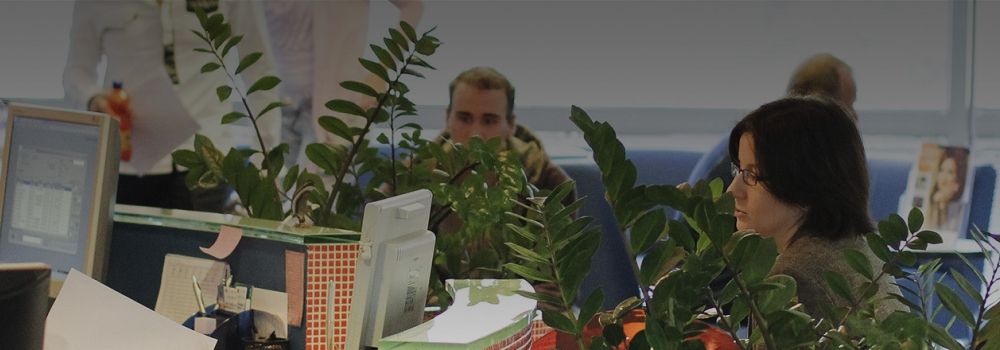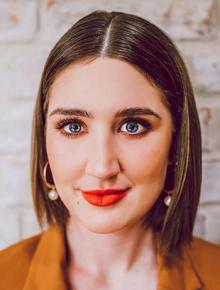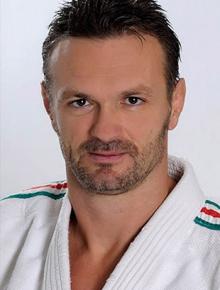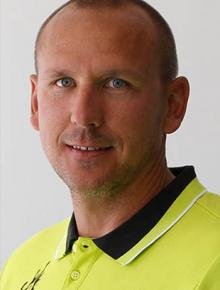Frequently Asked Questions, Common Questions
Eagle Eye Laser Clinic, the laser eye surgery specialist
Show All
Pre-operative examination
-
Is it possible to perform pre-operative examinations in the regional centres?Pre-operative examinations include several very detailed tests that require the use of several special instruments. This instrumentation is only available in OPTIK-MED's Budapest-based centre, therefore the entire pre-operative examination may only be performed here.
-
How much does the examination cost?The first pre-operative examination is discounted in case of online application, for people aged under 40 it costs HUF 15 000(in case of online application, it costs HUF 25.000 instead of HUF 45.000 for patients above 40). HUF 15 000 is included in the price of the treatment.
Laser treatment, laser eye surgery
-
How much time is it needed after the examination for carrying out the treatment?On the day of the examination no laser surgery may be performed because of the dilation of the pupils. However, from the next day on, it may take place at any time within the next six months. Usually, surgeries can be scheduled within 1-2 weeks.
-
Following the treatment, after how many days can I go back to work?This largely depends on your individual sensitivity and the degree of your prescription. Patients usually go back to work 1-2 days after FEMTO and LBV® presbyopia treatments, whereas after PRK tretament it is necessary to have a rest for 4 to 10 days.
-
Can I go on sick leave after the surgery?On the day of treatment, the patient receives a Treatment Report sheet which confirms that a laser intervention has been performed. Please take this report to your GP who will issue the medical certificate needed to go on sick leave. The length of the required sick leave must be consulted with your GP.
-
When can I drive a car for the first time after the treatment?It is not recommended to drive a car in the first 7-10 days after a PRK treatment. After a FEMTO or an LBV® surgery, the next day patients usually come to the first day’s post-operative check with their own car; however, we can only issue an official certificate on suitability for driving on the third day.
-
For how long will my driver’s license contain the ‘corrective lenses’ restriction?If the patient has an old (non-card format) driver’s license, when they have reached the final visual acuity, i.e. during the post-operative appointment which takes place after 5 or 6 months, we can affix a stamp reading ‘may drive without corrective lenses’ on your driver’s license.
If you already have a new driver’s license in card format, your ophthalmologist will write the text ‘may drive without corrective lenses’ in the report on your last post-operative appointment. -
Should I have the treatment performed in winter or summer?From an ophthalmologic point of view, there is no difference between the seasons. More or less the same proportion of patients choose winter and summer months.
-
How long are eye drops and sunglasses needed?
Why are eye drops needed?
The cornea has epithelial limbal stem cells which have a very useful biological function. If any damage occurs to the eye (e.g. it is hit by a branch), these stem cells immediately take action and attempt to restore the initial state as it was before the injury. However, stem cells also perceive a laser treatment as a damage and immediately after the surgery they mobilise their forces to restore the state prior to the laser treatment, that is, the refractive error of the cornea. In order to prevent this from happening, the prescribed eye drops must be used.
In extremely rare cases, however, in spite of the constant use of eye drops, stem cells manage to achieve some results; for example, in contrast to the correction of 8 dioptres promised to you, eventually your visual acuity is only improved by 7 dioptres. Our medical guarantee applies to such cases. In this case, OPTIK-MED will perform the supplementary correction free of charge.
The use of eye drops in the post-operative period protects the eye against infections and inflammations as well.
How long do I have to use eye drops?
After aFEMTO and an LBV® presbyopia treatment, the struggle with stem cells takes significantly less time, because the dioptre correction is not performed on the surface of the cornea. Usually, it is enough to use eye drops for 3 weeks, with a gradually decreasing intensity.
After a PRK treatment stem cells typically need 6 months to give up the fight. Afterwards, they will not try to restore the defective curvature of the cornea, but consider the post-treatment corneal curvature as the new state to protect.
The good news is that from this moment on, stem cells will relentlessly safeguard your new keen eyesight gained owing to the treatment for a lifetime.
The dosage of eye drops may vary from person to person. Therefore, it is important to attend the scheduled post-operative visits so that your ophthalmologist and you are able to jointly monitor and control the evolution of your visual acuity. The medical guarantee is only valid for people who regularly attend the post-operative appointments.
Why do I need to wear sunglasses?
After laser treatments, UV light stimulates an increased activity of corneal stem cells, which are working to restore the situation prior to the treatment and thereby preventing achievement of the best possible visual acuity. You can easily prevent this by wearing sunglasses.
How long should I wear sunglasses?
After the FEMTO and LBV® presbyopia treatments, it is enough to pay attention to UV protection for 2 months. After PRK treatments, it is recommended to wear sunglasses for 6 months. However, wearing sunglasses is also recommended for those who have not undergone a laser surgery in case of UV rays.
When should I wear sunglasses?
- outdoors when you can see your own shadow (in cloudy weather and indoors it is not necessary)
- in the car and on the means of public transport, as windshields usually do not block 100% of the UV rays
- in places with UV lamps: in bars/clubs with UV lamps, tanning beds, or if someone works with UV light, such as money inspectors, manicurists or dental assistants.
It is a misbelief that wearing sunglasses indoors is necessary after a laser eye surgery. There is no need for this, since conventional windows block 100% of UV rays.
Examination and surgery dates and times, opening hours
-
Do I have to make an appointment for the pre-operative examination?Yes, pre-operative examinations are scheduled in advance. Every day, 200-300 patients visit OPTIK-MED and all of them rightfully expect from us that their pre-operative examination or post-operative check is started on time. This can only be ensured if appointments are made in advance.
-
How to make an appointment?Call us at +36 1 250 5505, fill in the form in the upper right corner or contact us in person.
-
What are the Clinic’s opening hours?Post-operative examinations are performed each day of the week excepting Sundays.
Mon, Wed: 8 a.m. - 6 p.m., Tue, Thu, Fri, Sat: 8 a.m. - 4 p.m., Sun 8 a.m. - 2 p.m.
A pre-operative examination usually takes 1.5-2 hours, therefore our latest starting time is at 4 p.m. on Mondays and Wednesdays, and at 2 p.m. on Tuesdays, Thursdays, Fridays and Saturdays. -
How long does it take until I can get an appointment for an examination?In general, in the winter, we can schedule an appointment for a pre-operative examination within 2 weeks, whereas in the summer, within 1 week.
-
How long does it take until I can get an appointment for a surgery?In general, in the winter, we can schedule an appointment for a pre-operative examination within 2 weeks, while in the summer, within 1 week.
-
How many post-operative checks are needed?
Post-operative checks after PRK treatments
- On the 1st day (only in the Budapest-based centre)
- On the 1st day (only in the Budapest-based centre)
- After 1 week
- After 1 month
- After 2 months
- After 3 months
- After 4 months
- After 5 months
- After 6 months (only in the Budapest centre)
- After 1 year (only in the Budapest centre)
Post-operative checks after FEMTO treatments
- On the 1st day (only in the Budapest-based centre)
- After 1 week
- After 1 month
- After 2 months
- After 6 months (only in the Budapest centre)
Post-operative checks after LBV® presbyopia treatments (for people with reading glasses)
- On the 1st day (only in the Budapest-based centre)
- After 1 week
- After 1 months (only in the Budapest centre)
- After 2 months (only in the Budapest centre)
- After 6 months (only in the Budapest centre)
Pre-operative examinations, laser treatments and the first post-operative checks may expensively be carried out in the centre of OPTIK-MED Eagle Eye Clinic since the required very expensive, high-tech instrumentation and the three lasers are only available here. The remaining post-operative visits, however, may also take place in OPTIK-MED’s regional centres (except for LBV® presbyopia treatments, in the case of which all post-operative checks must take place in the Budapest-based centre).
OPTIK-MED’s regional centres:
To this end, OPTIK-MED has established a regional network in order to save a significant amount of travelling for patients living outside of the capital. Find the nearest accredited OPTIK-MED centre. Your personal consultant will provide you with the exact contact details.
Frequently Asked Financial Questions
-
When do you have to pay for the treatment??Payments on cash or by bank card are possible on the day of the treatment. In the case of instalment payment, the initial payment is to be made on the day of the treatment, while remaining instalments will fall due on the 15th day of each month starting from the following month. In the case of payment by bank transfer, please initiate the transaction at least three working days before the treatment. Payee: K-MED Kft. Bank account: MKB Bank: 10300002-20196233-70213285. Please be sure to enter the name of the patient whose treatment is being paid in the Comments field. It is important that you bring the original bank transfer confirmation with you and present it before the surgery.
-
Is it really possible to claim a tax refund for 20% of the price? How does this work?A tax refund may be requested for individual payments. If you are a contracted member of a voluntary health insurance fund (egészségpénztár), at the end of the examination you must check with us whether or not we accept the card issued by the given fund, or you can pay the price of the surgery only in cash, or eventually you need to produce a certificate of coverage. The invoice on the treatment, indicating the appropriate payment method, will be issued to your voluntary health insurance fund. Please request the additional terms and conditions from your voluntary health insurance fund.
-
Which voluntary health insurance funds are your contracted partners?Payments may be made through voluntary health insurance funds in three ways. These are as follows:
- the patient pays in cash and is given an invoice issued to the voluntary health insurance fund as customer. The patient will have to present this to the fund.
- Blocking on the account (also known as ‘certificate of coverage’): The patient should call their voluntary health insurance fund and requests them to block the amount on their account. On the day of treatment, the patient should bring documentary proof of this blocking, or it should be sent directly to the clinic by the fund. If a treatment is scheduled for Saturday, please note that voluntary health insurance funds are usually not open Saturdays, and therefore the amount must be blocked by no later than Friday.
- Payment by voluntary health insurance fund card (egészségpénztári kártya): This is a plastic payment card similar to a bank card: the holder can pay by presenting this card. Please make sure that, in addition to the price of the treatment, a few thousand forints should be available on the account to cover the handling charges. In this case, the clinic will send the bill directly to your voluntary health insurance fund.
We are contracted with the following voluntary health insurance funds:
ALLIANZ HUNGÁRIA Voluntary Health Insurance Fund
Members may the price of the treatment on the spot in cash, the amount may be blocked on their account held with the fund or health insurance fund cards (egészségpénztári kártya) are also accepted as a method of payment. The Clinic will issue an invoice based on this (indicating bank transfer as the method of payment).ARANYKOR Voluntary Health Insurance Fund
Patients may pay the price of the treatment in cash or by voluntary health insurance fund card.Prémium Voluntary Health Insurance Fund
Members should pay the price of the treatment on the spot in cash. Voluntary health insurance fund cards are also accepted as a method of payment, similarly to bank cards. Blocking on the account held with the fund is also possible.BALZSAM Voluntary Health Insurance Fund
Patients should pay the price of the treatment in cash.BUDAI Voluntary Health Insurance Fund
Members should pay the price of the treatment on the spot in cash.DANUBIUS Voluntary Health Insurance Fund
Cash payment and blocking on the account are the accepted methods of payment.DIMENZIÓ Voluntary Health Insurance Fund
Cash payment and blocking on the account are the accepted methods of payment. For payments by voluntary health insurance fund card, the daily limit is HUF 200.000. In case of amounts exceeding the daily limit, the limit needs to be increased, which must be arranged by the patient by contacting the competent voluntary health insurance fund.EGÉSZSÉGÉRT National Voluntary Health Insurance Fund
Members should pay the price of the treatment on the spot in cash or by voluntary health insurance fund card.ERŐ (Első Regionális Önkéntes, i.e. First Regional Voluntary) Health Insurance Fund
Patients should pay the price of the treatment on the spot in cash. Members are responsible for delivering the invoice to the fund.EXTRA-FIT Voluntary Health Insurance Fund
Treatments may only be paid in cash.GENERALI Voluntary Health Insurance Fund
Payment in cash or by voluntary health insurance fund card as well as blocking on the account held with the funds are the accepted methods of payment. For payments by voluntary health insurance fund card, the daily limit is HUF 250.000. In case of amounts exceeding the daily limit, the limit needs to be increased, which must be arranged by the patient by contacting the competent voluntary health insurance fund.HERENDI Voluntary Health Insurance Fund
Patients need to produce a certificate of coverage and sign it after the treatment. Cash payment is also possible.HONVÉD Voluntary Health Insurance Fund
If patients have a voluntary health insurance fund card, they can pay the treatment by swiping the card on the terminal or cash payment is also possible. Patients should produce a certificate of coverage issued by the health insurance fund.K & H MEDICINA Voluntary Health Insurance Fund
Cash payment and blocking on the account are the accepted methods of payment.MKB Voluntary Health Insurance Fund /Kristály and Talizmán Funds have been merged into it/
Payment in cash or by voluntary health insurance fund card are the accepted methods of payment.NAVOSZ Voluntary Health Insurance Fund
Members may pay the price of the treatment on the spot in cash, by credit card, by wire transfer, as well as by voluntary health insurance fund card.OTP Voluntary Health Insurance Fund
Patients may pay in cash or by voluntary health insurance fund card.PAJZS Voluntary Health Insurance Fund
Payments are accepted in cash, by voluntary health insurance fund card or by blocking on the account held with the fund.PATIKA Voluntary Health Insurance Fund
The member brings with them a magnetic card to the treatment which will be swiped on the terminal. Generally, the daily limit is HUF 200.000, thus this is the maximum amount that can be debited; the patient should bring the remaining amount with them. Cash payment is also possible.KARDIREX Voluntary Health Insurance Fund /formerly called Patrónus/
Members should pay the price of the treatment in cash. The invoice value will be refunded to the member by the voluntary health insurance fund. Blocking of funds on the account held with the fund is also possible.POSTÁS Voluntary Health Insurance Fund
Treatments may be paid in cash, by wire transfer or by voluntary health insurance fund card. If you choose wire transfer as your preferred payment method, you are required to produce a certificate of coverage issued by your voluntary health insurance fund.PRO VITA Voluntary Health Insurance Fund
The patient should have the price of the treatment blocked on their account held with the voluntary health insurance fund, and then the fund will send the relevant certificate of coverage to the clinic. By signing this document, the patient confirms the kind of treatment they had. Payment are also accepted in cash, by wire transfer or by voluntary health insurance fund card.Pro Sanitate Voluntary Health Insurance Fund
Payment are accepted in cash or by wire transfer (a certificate of coverage is required).SERVUS Voluntary Health Insurance Fund
Cash and wire transfer are the accepted methods of payment. In case of wire transfer, a certificate of coverage must be produced.TEMPO Voluntary Health Insurance Fund
On the surgery day, members should bring with them their voluntary health insurance fund card, which will be swiped on the terminal. Cash payment is also possible.UNIQA Voluntary Health Insurance Fund
It has merged with AXA Voluntary Health Insurance Fund. For details, see there.VASUTAS Voluntary Health Insurance Fund
On the surgery day, members should bring with them their voluntary health insurance fund card, which will be swiped on the terminal. Cash payment is also possible.VITALITÁS Voluntary Health Insurance Fund
The price of the treatment is to be paid in cash.VITAMIN Voluntary Health Insurance Fund
On the surgery day, members should bring with them their voluntary health insurance fund card, which will be swiped on the terminal. Cash payment is also possible.WELLNESS Voluntary Health Insurance Fund
Members pay by vouchers issued by the voluntary health insurance fund; subsequently, we issue an invoice (indicating wire transfer as the method of payment).Authorisation for the Treatment of Beneficiaries
I, the undersigned ................................ (date of birth, mother’s birth name), as member of the health insurance fund, hereby declares that the beneficiary ................................ (date of birth, mother’s birth name) named in my contract concluded with the fund may use my voluntary health insurance fund card (egészségpénztári kártya) without my personal presence.
Date, signature of the voluntary health insurance fund member and two witnesses
Eagle-eyed people who have relied on the experience of the largest laser clinic
The Eagle Eye Clinic provides its experience gained with more than 130.000 successful laser eye surgeries and the available most advanced medical technology to its patients.

















